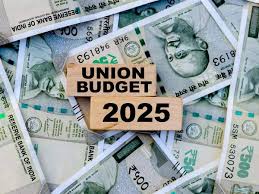As the countdown to Budget 2025 intensifies, expectations from various sectors have begun to rise. Taxpayers across the nation, including middle-class citizens and corporate India, are eagerly awaiting announcements that could significantly impact their financial landscape. With the Union Finance Minister, Nirmala Sitharaman, scheduled to present the budget on February 1, businesses, individuals, and industry leaders are keenly observing what reforms and fiscal measures will be introduced to address current economic challenges. Key anticipations span tax reforms, updates to the Goods and Services Tax (GST) system, and allocations towards crucial infrastructure projects, with many sectors hoping for strategic measures to boost competitiveness and sustainability.
| Sector | Expectation |
| Banking | Investments in digital infrastructure, improved cybersecurity, and regulatory enhancements to foster a sustainable digital lending ecosystem. |
| Electric Vehicles (EV) | Enhancement of vehicle scrappage policy with incentives for EV adoption and modernization of automotive landscape. |
| Virtual Digital Assets (VDA) | Reduction in TDS on VDA transactions and alignment of taxation with other asset classes to encourage transparency and innovation. |
| Shipping and Logistics | Increased investments in port modernization, multimodal logistics parks, and simplified GST structure to improve logistics efficiency. |
| Defence | Increased capital expenditure for modernization of forces and strengthening naval assets, with a focus on domestic manufacturing. |
| Railways | Increased capital spending on the railway infrastructure, including expansion of Vande Bharat services and AI integration. |
| Personal Income Tax | A complete revision of the personal income tax structure, focusing on simplification and a unified approach for all asset classes. |
| NBFCs | Rationalization of TDS, digitization for efficient loan disbursement, and support for sustainable urbanization. |
| MSMEs and Microfinance | Creation of an exclusive liquidity window and microfinance schemes to enhance financial inclusion and support green financing. |
| Affordable Housing | Revisions in affordable housing definition, increased liquidity, and support for developers to address rising land costs. |
| IT Industry | Investment in R&D for emerging technologies, tax benefits for startups, and policy support for growth in cybersecurity and e-commerce. |
| E-commerce | Emphasis on skill development and job creation, as well as improving rural demand and infrastructure for enhanced delivery reliability. |
| Pension and Tax Deductions | Tax benefits for pension products and life insurance, enhancing retirement security for individuals. |
| Healthcare | Increased budget outlay for public health, with tax incentives for health insurance premiums and expanded coverage for senior citizens. |
| Education | Increased budget for NEP implementation, GST reduction for educational products, and focus on skill development, particularly in AI. |
As India gears up for Budget 2025, industry sectors expect fiscal policies that foster growth, sustainability, and resilience, balancing both immediate needs and long-term goals. With comprehensive reform and strategic investments, the budget is poised to steer the country towards more inclusive and dynamic economic progress.
Banking Sector’s Expectations for Digital Growth and Security
In the banking sector, a primary focus is on expanding digital infrastructure, improving cybersecurity frameworks, and enhancing regulatory norms. Leaders in this sector are hopeful that the government will prioritize initiatives to support the growing digital lending ecosystem. This would involve the development of innovative credit assessment models and mechanisms to foster responsible lending practices. With an increasing reliance on digital transactions, regulatory enhancements and measures to build consumer trust are vital to the sector’s future growth. Investments in technology are expected to fuel economic growth, ensuring India’s leadership in the global digital payments arena.
Boosting Competitiveness in the Electric Vehicle (EV) Sector
The automotive sector, particularly stakeholders in the Electric Vehicle (EV) industry, anticipates a stronger push towards the vehicle scrappage policy. By enhancing scrappage incentives, the government can modernize India’s automotive landscape. Linking scrappage with the adoption of EVs is expected to accelerate the transition to cleaner mobility, contributing significantly to environmental sustainability. Scrappage facilities and the automation of fitness tests could streamline processes, mirroring global practices that have proven effective in reducing pollution and stimulating job creation. Moreover, incentivizing EV adoption aligns with the global push towards sustainable development and clean transportation.
Taxation Reforms for Virtual Digital Assets (VDAs)
For the rapidly growing virtual digital asset (VDA) industry, there are strong expectations for tax reforms to bring greater transparency and ease to the market. A reduction in the Tax Deducted at Source (TDS) rate on VDA transactions, alongside an increase in the TDS applicability threshold, is expected to ease compliance challenges. Such measures would also promote market transparency, thus supporting the growth of the industry. Additionally, aligning VDA taxation with other asset classes would create a level playing field, fostering innovation in this emerging sector.
Shipping Industry’s Push for Infrastructure Investment
Key expectations from the shipping and logistics sector revolve around increased investments in port modernization and the development of multi-modal logistics parks. Expediting projects such as the Sagarmala Project and Dedicated Freight Corridors (DFCs) is crucial to reducing logistics costs and improving transit times across the nation. The sector also hopes for a more simplified GST structure to lower the tax burden on logistics services. By improving connectivity and supporting skill development, the government can enhance operational efficiency, thus strengthening India’s position in global trade.
Defence and Railway Budgetary Allocations
The defence sector anticipates a continued focus on capital expenditure, especially in modernization and strengthening of naval assets. A significant portion of the budget is expected to be allocated towards defense technology and enhancing domestic manufacturing capabilities, aligning with India’s vision of achieving Aatmanirbhar Bharat (self-reliant India).
On the railways front, stakeholders expect a considerable increase in capital spending, especially in the expansion of the Vande Bharat train services. Additionally, investments in freight infrastructure, including multi-modal cargo terminals, and the incorporation of advanced technologies like Artificial Intelligence (AI) into operations are crucial for improving both passenger and freight transport services across the country.
Revisions in Personal Income Tax Structure
There is an increasing expectation for a comprehensive revision of the personal income tax structure in Budget 2025. This revision may involve a simplified and unified approach to taxation, covering all asset classes and reducing complex tax structures. Such changes are anticipated to level the playing field for various investment instruments, including Fixed Deposits, Debt Mutual Funds, and Bonds, fostering a more balanced and equitable investment environment. This approach is expected to ease financial planning for individuals and businesses alike.
NBFCs and the Need for Rationalization of TDS and Support for Urbanization
Non-Banking Financial Companies (NBFCs) are advocating for the rationalization of the TDS structure, particularly on interest payments, which can ease liquidity challenges faced by the sector. Additionally, the government’s emphasis on sustainable urbanization and infrastructure development in Tier 2 and Tier 3 cities could have a significant impact on businesses and credit availability. The increased focus on digitization will further streamline loan disbursements, enhancing accessibility to credit for previously underserved populations.
Exclusive Liquidity Window and Microfinance Support for MSMEs
The Micro, Small, and Medium Enterprises (MSME) sector, pivotal to India’s economic growth, anticipates measures to support financial inclusion. Stakeholders expect the creation of an exclusive liquidity window to support MSMEs and microfinance schemes, facilitating their access to affordable capital. Additionally, green financing initiatives can play a critical role in enabling NBFCs to fund environmentally sustainable projects, fostering greater entrepreneurial growth.
Affordable Housing Support
The housing sector is urging the government to revise the definition of affordable housing and incentivize developers to increase the supply of affordable homes. Supportive measures like improved liquidity, easier credit access, and expedited land approvals are essential for revitalizing the sector. Expanding the affordable housing loan amount limit, particularly for metro cities, will also help address rising land costs and improve housing accessibility for more citizens.
IT Industry’s Demand for R&D Investment and Tax Benefits
The IT industry is anticipating an increase in budgetary allocations for research and development (R&D) in emerging fields like Artificial Intelligence (AI), Machine Learning (ML), and quantum computing. Such investments will position India at the forefront of technological innovation. Tax benefits for startups and MSMEs in the IT sector are also expected, enabling businesses to scale and attract more investment. Moreover, stakeholders in the industry are hopeful that the government will prioritize policy measures to support startups in sectors like cybersecurity and e-commerce, which are essential for the digital transformation of the Indian economy.
E-commerce Sector’s Focus on Skill Development and Job Creation
The e-commerce sector anticipates the government’s emphasis on skill development and job creation, especially as the workforce participation rate continues to rise. Investment in infrastructure, including logistics and digital frameworks, will also enhance delivery reliability and speed, further boosting the sector’s growth. Measures to stabilize rural demand through Direct Benefit Transfers (DBTs) and improvements in agricultural supply chains will also have a positive impact on e-commerce in rural areas.
Pension Incentives and Tax Deductions for the Elderly Population
With the elderly population steadily increasing, there is a growing demand for pension product incentives. The government is expected to align the tax deduction structure for life insurance annuity products with the National Pension Scheme (NPS), enabling individuals to build more robust financial safety nets for retirement. Additionally, extending tax benefits for life insurance premiums under the new tax regime would encourage more individuals to invest in life insurance and retirement plans, securing long-term financial wellbeing.
Healthcare Sector’s Call for Increased Budget Outlay
The healthcare sector is pushing for an increase in the budget outlay for public healthcare, with the aim of achieving Universal Health Coverage (UHC). As healthcare costs continue to rise, measures such as increasing the tax deductions for health insurance premiums and expanding coverage limits for senior citizens are expected. These steps will reduce the financial burden on families and enhance access to quality healthcare services across the country.
Education Sector’s Demand for Increased Investment
The education sector anticipates an increase in budget allocation to meet the goals of the National Education Policy (NEP) 2020. There is a growing demand for improved digital infrastructure and a reduction in GST rates on educational products and services. Additionally, stakeholders are advocating for the strengthening of skill development initiatives, particularly in emerging sectors like AI, to ensure that the workforce remains competitive in a rapidly evolving job market.
MSME Sector’s Request for Systemic Reforms
In the MSME sector, systemic bottlenecks and operational inefficiencies are significant barriers to growth. The sector calls for reforms in the GST payment structure, which currently burdens MSMEs with tax remittance before buyer payments are realized. Such structural changes would alleviate liquidity pressures and help MSMEs thrive, thus contributing more effectively to India’s industrial and economic growth.




